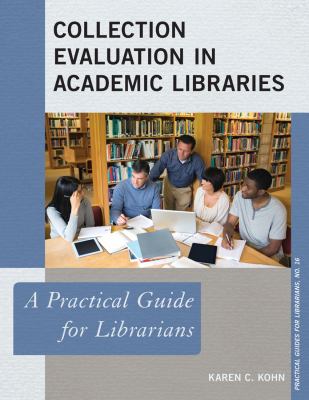
Book
|
Collection evaluation in academic libraries : a practical guide for librarians
Copies
1 Total copies, 1 Copies are in,
0 Copies are out.
Title
Collection evaluation in academic libraries : a practical guide for librarians
Call No
025.2 1877
Authors
Subjects
Language
English
Published
Lanham : Rowman & Littlefield, [2015]
Publication Desc
xvii, 185 pages : illustrations ;
ISBN
9781442238596
alk. paper)
LCCN
2015004170
Series
Dimensions
29 cm.









